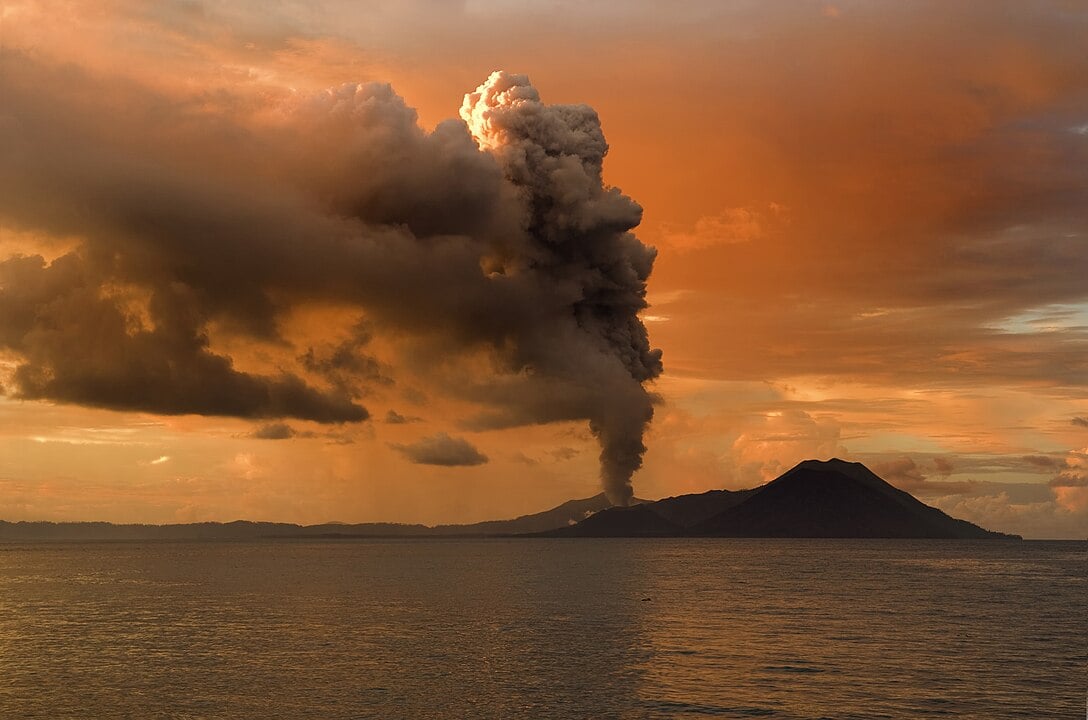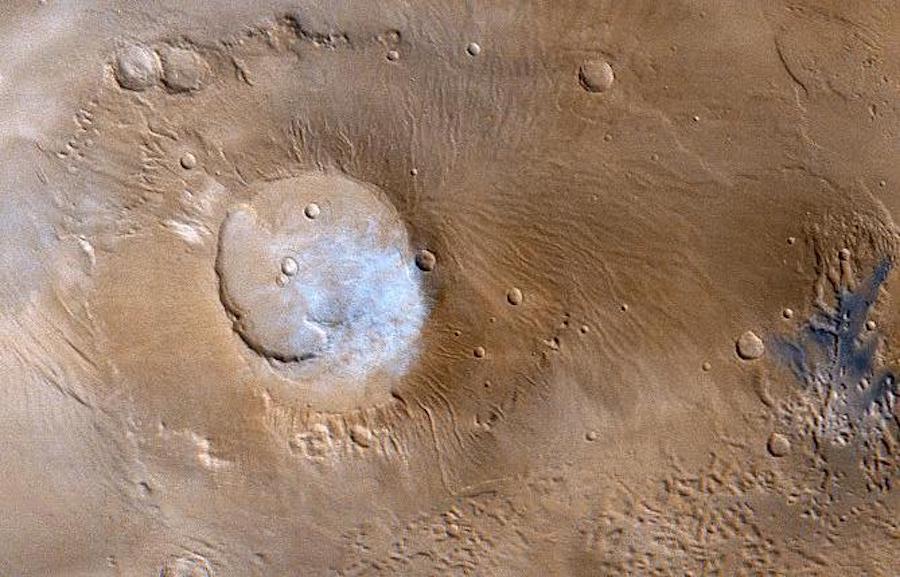Between 4.1 and 3 billion years ago, Mars was volcanically active. Massive eruptions existed across the planet's surface, throwing material and gases high into the thin Martian atmosphere. A new study uses climate modelling to explore whether these events could have transported water ice to unexpected regions of the red planet. The team, led by Saira Hamid from Arizona State University simulated the ancient volcanic eruptions to see what happened to water vapour during each event. The results from their study were quite surprising.
When water vapour shot into Mars’s cold atmosphere from volcanic eruptions, it froze rapidly, creating ice crystals that fell back to the surface. The simulations showed that a single three day eruption could deposit ice layers up to five metres thick on the Martian surface, building up substantial accumulations over time. But this leaves the crucial question of just how this ice could possibly survive billions of years in equatorial regions where temperatures should cause it to sublimate into a gas and straight into the atmosphere? The answer lies in what happened after the eruptions ended.
 Volcano Tavurvur in Papua New Guinea erupting (Credit : Taro Taylor)
Volcano Tavurvur in Papua New Guinea erupting (Credit : Taro Taylor)
If volcanic debris, dust, or lava flows buried these ice deposits quickly enough, its likely they would have been insulated from direct exposure to sunlight and the thin atmosphere. Protected beneath these layers, the ice could remain stable for geological timescales, even in regions where surface ice would normally be impossible. These eruptions could also have released sulphuric acid into the Martian atmosphere, which could have plunged the entire planet into a prolonged global winter. This extended cold period would have allowed ice to accumulate not just during individual eruptions but over sustained periods, creating even more substantial deposits.
The research team identified a two volcanoes that could explain the ice deposits observed in equatorial regions today; Syrtis Major and Apollinaris Mons. Apollinaris Mons is an ancient volcano situated centrally within the Medusae Fossae Formation, erupted between 3.9 and 3.5 billion years ago. The proximity of these volcanoes to regions showing the highest hydrogen signatures suggests these ancient eruptions may have been directly responsible for creating equatorial ice reservoirs.
 False colour Mars Global Surveyor image of Apollinaris Mons. White clouds can be seen hovering above the volcano (Credit : NASA/JPL/MSSS)
False colour Mars Global Surveyor image of Apollinaris Mons. White clouds can be seen hovering above the volcano (Credit : NASA/JPL/MSSS)
Measurements taken from orbit reveal elevated hydrogen levels around the equatorial regions which aligns well with these new volcanic models. While these hydrogen signatures aren't definitive proof of buried ice, they strengthen the case that ancient volcanic activity may have delivered frozen water to some of the warmest regions of Mars, where it patiently waits beneath the surface for future explorers to discover.
If these ice deposits truly exist beneath the equatorial surface, they could prove invaluable for future human exploration. The equatorial regions on Mars offer more favourable landing sites than the rather more harsh polar environments, and access to water ice would be transformative for any crewed mission. Ice could provide drinking water, be split into oxygen for breathing, or even be converted into rocket fuel for the return journey to Earth. Although any astronaut heading to Mars without enough fuel to get home is made of stronger stuff than I!
Source : Volcanic eruptions may have delivered hidden ice to Mars's equator

